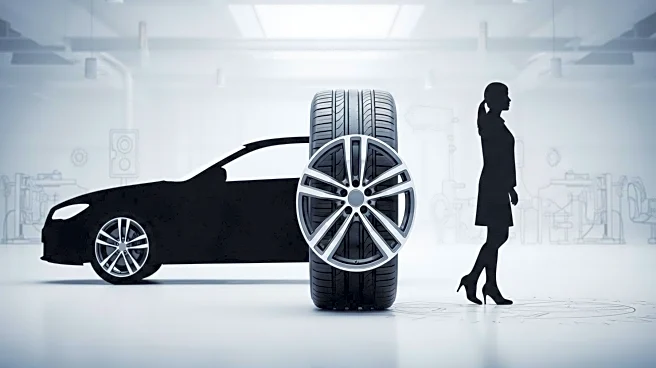What's Happening?
Michelin is addressing the ongoing tension between the tire performance demands of original equipment manufacturers (OEMs) and those of replacement-market consumers. At a recent event at Road Atlanta, Michelin highlighted the differences in tire specifications for automakers versus private buyers. Automakers prioritize low rolling resistance for fuel efficiency and dry-braking performance, influenced by Consumer Reports rankings. In contrast, North American consumers focus on tread life and traction, especially in wet and snowy conditions. Michelin's engineering efforts aim to balance these competing demands, though compromises remain inevitable.
Why It's Important?
The differing priorities between automakers and consumers impact tire design and performance, influencing vehicle efficiency and safety. Automakers' focus on rolling resistance aligns with regulatory fuel economy targets, while consumers' emphasis on tread life affects long-term cost and safety. As electric vehicles gain popularity, the demand for low rolling resistance tires is expected to rise, potentially shifting consumer preferences. Michelin's ability to navigate these demands is crucial for maintaining its market position and meeting diverse customer needs.
What's Next?
Michelin will continue to develop tires that balance OEM and consumer demands, potentially leading to innovations in tire technology. As electric vehicles become more prevalent, the focus on rolling resistance may increase, prompting further adjustments in tire design. Michelin's collaboration with automakers will likely intensify to meet evolving efficiency standards, while consumer education on tire benefits may become more prominent.
Beyond the Headlines
The tension between OEM and consumer tire preferences highlights broader challenges in the automotive industry, including regulatory pressures and consumer expectations. Michelin's efforts to balance these demands reflect the complexity of product development in a competitive market. The company's approach may influence industry standards and consumer awareness of tire performance factors.













